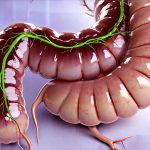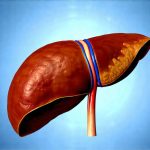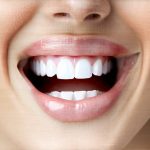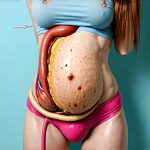Our modern world exposes us to an unprecedented number of environmental toxins, many of which are heavy metals. These aren’t just relics of industrial pollution; they’re present in our food, water, air, dental amalgams, cosmetics, and even some household products. While the body has natural detoxification mechanisms, chronic exposure can overwhelm these systems, leading to accumulation and potential health consequences. Understanding how heavy metals interact with gut health – the cornerstone of overall wellbeing – is crucial for proactive wellness strategies. This isn’t about fear-mongering; it’s about informed awareness and empowering ourselves with knowledge to mitigate risks and support our body’s innate healing capabilities.
The gut microbiome, a complex ecosystem of trillions of microorganisms residing in our digestive tract, plays a pivotal role not only in digestion but also in immune function, nutrient absorption, and detoxification processes. Heavy metal exposure disrupts this delicate balance, creating a cascade of effects that can compromise gut barrier integrity, alter microbial composition, and impair the body’s ability to eliminate toxins effectively. This intricate relationship highlights why addressing heavy metal burden often necessitates a holistic approach focused on supporting gut health alongside targeted detoxification strategies. The implications extend beyond digestive symptoms; they touch upon neurological function, immune resilience, and long-term chronic disease risk. You can learn more about keeping gut health simple here: https://vitagastro.com/how-to-keep-gut-health-simple-and-consistent/.
Heavy Metals & Gut Microbiome Disruption
Heavy metals – lead, mercury, cadmium, arsenic, aluminum – aren’t biologically necessary for human function, and therefore the body struggles to utilize them effectively. Instead, they tend to accumulate in tissues like bone, brain, liver, and kidneys, where they can interfere with enzymatic processes and cellular functions. The gut microbiome isn’t merely a passive bystander; it actively interacts with heavy metals, influencing their absorption, distribution, metabolism, and excretion. However, this interaction is often two-sided. – Some microbes can biotransform heavy metals, altering their toxicity levels (sometimes for the better, sometimes for worse). – Others may bind to heavy metals, reducing their bioavailability but also potentially disrupting microbial balance. – Chronic exposure creates an inflammatory environment within the gut which further damages the microbiome’s diversity and functionality. This creates a vicious cycle where impaired detoxification capacity leads to increased metal burden, exacerbating gut dysbiosis and inflammation. Understanding how to balance gut acidity can improve nutrient absorption: https://vitagastro.com/how-to-balance-gut-acidity-and-improve-nutrient-absorption-through-smart-eating/.
The specific impact of each heavy metal varies depending on its chemical properties and how it interacts with the gut environment. For instance, lead is known to disrupt the intestinal barrier function, increasing permeability (“leaky gut”) and allowing more toxins to enter the bloodstream. Mercury can directly inhibit beneficial bacteria while promoting the growth of pathogenic species. Cadmium accumulates in the intestines, causing oxidative stress and inflammation which further compromises the gut lining. Arsenic, even at low levels, can alter microbial composition and reduce the abundance of butyrate-producing bacteria – key players in maintaining gut health and reducing inflammation. A compromised microbiome struggles to perform its essential functions, including producing short-chain fatty acids (SCFAs) like butyrate, which are vital for gut barrier integrity and immune regulation.
Ultimately, heavy metal exposure doesn’t just damage the gut; it damages the communication between the gut and the rest of the body. The gut is now less effective at signaling to the immune system, leading to altered immune responses and potentially contributing to autoimmune conditions. It also impacts nutrient absorption, as damaged intestinal lining reduces the uptake of essential vitamins and minerals. This creates a state of systemic vulnerability where the body’s overall resilience is diminished. Supporting microbial diversity through dietary changes, probiotics (with caution – see below), and prebiotics can help mitigate some of these effects but addressing the source of exposure remains paramount. If you suspect issues, consider how to build a gut health profile: https://vitagastro.com/how-to-build-a-complete-gut-health-profile-with-diagnostics/.
Supporting Detoxification Pathways
Detoxification isn’t about aggressive cleansing; it’s about supporting the body’s natural processes for eliminating toxins. The liver is the primary detoxification organ, but the gut plays a crucial role in phase II detoxification – where toxins are converted into water-soluble forms that can be excreted through bile or urine. Heavy metals significantly burden these pathways, making them less efficient. – Glutathione, often referred to as the “master antioxidant”, is central to many detoxification processes. Supporting glutathione production requires adequate levels of precursors like N-acetyl cysteine (NAC), glycine, and selenium. – Fiber intake is essential for binding toxins in the gut and promoting their elimination through stool. However, it’s important to choose fiber sources carefully, considering individual sensitivities. – Adequate hydration ensures that toxins are efficiently flushed from the body via kidneys and bowels.
The role of bile cannot be understated. Bile, produced by the liver, emulsifies fats and aids in the excretion of fat-soluble toxins, including heavy metals. A healthy gut microbiome supports bile acid metabolism, optimizing detoxification. Conversely, dysbiosis can impair this process, leading to reabsorption of toxins. Supporting bile flow through foods like artichokes, beets, and dandelion root may be beneficial. Furthermore, minimizing further exposure is key. This could involve filtering drinking water, choosing organic food whenever possible, avoiding products containing heavy metals (like some cosmetics), and considering amalgam removal if appropriate (under the guidance of a qualified professional).
Crucially, attempting rapid detoxification can sometimes do more harm than good. “Die-off” symptoms – flu-like symptoms caused by the release of toxins from tissues – can be intense and uncomfortable. A gradual approach that prioritizes gut transit and supports liver function is generally recommended: https://vitagastro.com/how-to-naturally-support-gut-transit-and-reduce-pressure/. Remember, detoxification is a process, not an event. It’s about creating a sustainable lifestyle that minimizes exposure and supports the body’s natural ability to eliminate toxins over time.
The Role of Probiotics & Prebiotics
Probiotics – live microorganisms that confer a health benefit when consumed – are often touted as detoxification aids, but their use in cases of heavy metal burden requires careful consideration. Some probiotic strains have demonstrated an ability to bind to certain heavy metals in vitro (in the lab), reducing their absorption. However, this effect isn’t consistent across all strains or individuals and may not translate directly to improved detoxification in vivo. In fact, some probiotics can actually increase gut permeability in certain circumstances, potentially exacerbating metal absorption. – Selecting probiotic strains specifically researched for heavy metal chelation is crucial (though research remains limited). – Starting with low doses and monitoring for any adverse reactions is essential.
Prebiotics – non-digestible fibers that nourish beneficial bacteria – are generally more helpful than probiotics in supporting gut health during detoxification. By selectively feeding beneficial microbes, prebiotics can help restore microbial balance and enhance the production of SCFAs like butyrate. – Foods rich in prebiotics include garlic, onions, leeks, asparagus, bananas, and apples. – However, individuals with significant gut dysbiosis may experience bloating or gas from prebiotic-rich foods; introducing them gradually is recommended.
It’s important to remember that probiotics and prebiotics are tools, not cures. They should be used as part of a broader strategy that addresses the root cause of heavy metal exposure and supports overall gut health. A personalized approach, guided by a healthcare professional, is essential for determining the most appropriate probiotic or prebiotic regimen.
Addressing Gut Permeability
“Leaky gut,” or increased intestinal permeability, is a hallmark of chronic inflammation and often accompanies heavy metal toxicity. When the tight junctions between intestinal cells become compromised, larger molecules – including undigested food particles, toxins, and even bacteria – can pass through the gut lining into the bloodstream, triggering an immune response and contributing to systemic inflammation. Heavy metals themselves contribute to this permeability, but addressing it is crucial for reducing toxic load and improving overall health. – Dietary changes that minimize inflammatory foods (processed foods, sugar, gluten in sensitive individuals) are foundational. – Incorporating L-glutamine, an amino acid that supports gut cell repair, may be helpful (but consult with a healthcare professional).
Reducing stress levels is also vital, as chronic stress can significantly impair gut barrier function. Stress hormones like cortisol increase intestinal permeability. Practices like meditation, yoga, and deep breathing exercises can help mitigate this effect. Furthermore, supporting the mucus layer of the gut – the protective barrier that lines the intestines – is critical. Foods rich in zinc (like oysters, pumpkin seeds) and vitamin A (sweet potatoes, carrots) support mucus production. – Consider incorporating slippery elm or marshmallow root tea, known for their soothing properties and ability to protect the intestinal lining.
Restoring gut permeability isn’t a quick fix; it requires consistent effort and a holistic approach that addresses diet, stress management, and lifestyle factors. By strengthening the gut barrier, you not only reduce toxic load but also improve nutrient absorption, enhance immune function, and restore overall wellbeing. A healthy gut is the foundation of a resilient body, capable of navigating the challenges of modern environmental exposures. Understanding how gut health influences skin can further aid in this process: https://vitagastro.com/how-gut-health-influences-skin-issues-and-bloating/. Finally, if you’ve been on medication for a long time, learn how to rebuild gut health after reflux .


















